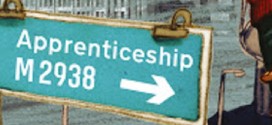In the new Post-16 Skills Plan presented to Parliament last week the government plan to have pupils choose between academic and technical routes at 16 was outlined in detail.
The government has published plans that all young people be given two choices at 16, the academic route, which consists of A-levels followed by higher education (an undergraduate degree) and then skilled employment, or the technical one, which consists of either an apprenticeship or college-based technical education followed by higher level apprenticeship or higher technical study and then skilled employment.
The 15 technical routes
What is proposed is that the number of qualifications presently available be reduced and the vocational educational landscape by simplified. This is to be achieved by introducing 15 new technical routes, each of which will be designed in partnership with employers to make sure that they include learning and training in areas and skills which are needed in industry.
- The agriculture, environment and animal care route
- The business and administrative route
- The catering and hospitality route
- The childcare and education route
- The construction route
- The creative and design route
- The digital route
- The engineering and manufacturing route
- The hair and beauty route
- The health and science route
- The legal, finance and accountancy route
- The protective services route
- The sales, marketing and procurement route
- The social care route
- The transport and logistics route
Successful completion and achievement of each of these technical routes will be recognised by a National Certificate, which is likely to include a qualification and evidence of long-term, structure work-experience having been undertaken over the two-year programme.
What kind of skilled employment will these technical routes lead to?
Agriculture, environment and animal care job roles
This sector employs 454,726 according to the report and includes jobs such as conservationist, park ranger, farmer, horticulturalist, agricultural manager, and agricultural technician.
Business and administrative careers
The sector employs 2,204,478 and includes job roles like human resources officer, office manager, administrative officer, and housing officer.
Catering and hospitality jobs
This route which, according to the report, employs 568,998 includes roles such as chef, butcher, baker, catering manager, and events manager.
Careers in childcare and education
This technical route includes roles such as nursery assistant, early years officer, teaching assistant, and youth worker falling and, according to the data supplied, 1,060,804 people are employed in this sector.
Construction careers
The construction industry employs 1,625,448 and includes careers in construction like bricklayer, electrician, civil engineering technician, carpenter, and construction supervisor.
Jobs in the creative and design industry
The creative and design sector employs 529,573 and includes such jobs as arts producer, graphic designer, audio-visual technician, journalist, product designer, upholsterer, tailor, and furniture maker.
Digital careers
351,649 people are employed in the digital industry in roles such as IT business analyst, programmer, software developer, IT technician, web and app designer, and network administrator.
Careers in engineering and manufacturing
The engineering and manufacturing sector includes jobs such as engineering technician, vehicle mechanic, aircraft fitter, printer, process technician, and energy plant operative. This sector reportedly employs 1,319, 645 people and the nuclear sector in particular is expecting to see lots of employees retire in the near future, potentially creating a skills gap.
Hair and beauty job roles
Hair and beauty employs 293,004 and included in this sector are hair and beauty jobs like hairdresser, barber and beauty therapist.
Careers in health and science
Included in this sector are careers such as nursing assistant, pharmaceutical technician, sports therapist, laboratory technician, dental nurse, and food technician. The sector employs 915,979 people.
Legal, finance and accountancy careers
There are many legal, finance and accountancy roles, including accounting technician, paralegal, financial account manager, payroll manager, finance officer, and legal secretary and there are 1,325,482 employed in this sector.
Jobs in protective services
This technical route will cover preparation for roles such as police officer, fire service officer, non-commissioned officer and maritime operations officer. These service industries employ 398,400. The government has said that they expect this route to be delivered through apprenticeships primarily.
Sales, marketing and procurement jobs
Again, the plan is to deliver this route mainly through apprenticeships. Included are jobs like buyer, procurement officer, sales account manager, market research analyst and estate agent. This sector employs 957,185.
Social care careers
Including preparation for such roles as care worker, residential warden, probation officer and welfare counsellor, the social care route will be delivered mostly through apprenticeships. This sector employs 865,941.
Jobs in transport and logistics
This employment sector employs 589,509 and includes such careers as ship’s officer, railway signalling technician and HGV driver. Again, this route is likely to be delivered primarily through apprenticeships.
Technical routes make it easier for young people to choose
Perhaps introducing these 15 technical routes will make it easier for young people to choose their study path at 16 and there is no suggestion that choosing one of these technical study routes would prevent you from going on to university study if you wanted to, or indeed do a higher apprenticeship after A-levels. Many will think however that it’s a shame if structured work experience, which is valued by young people and employers alike is only offered to pupils on a technical route and not on an A-level programme of study, given the value of this to all students, whether they are academic or technical.

 Moving On magazine Careers and Qualifications for School Leavers
Moving On magazine Careers and Qualifications for School Leavers


 A New Sparta Group Company
A New Sparta Group Company